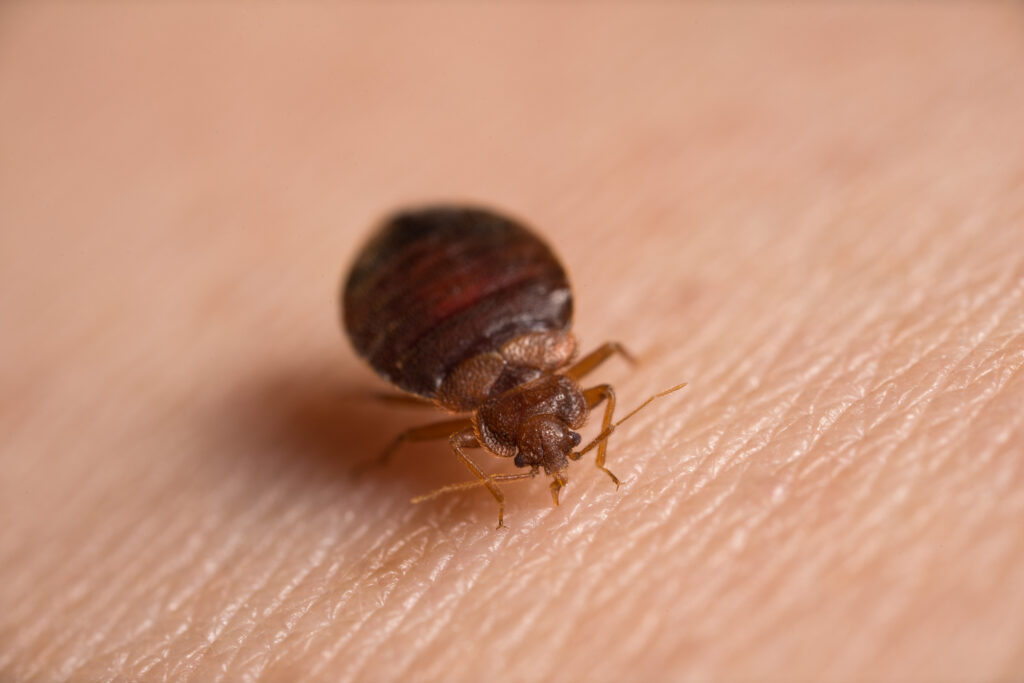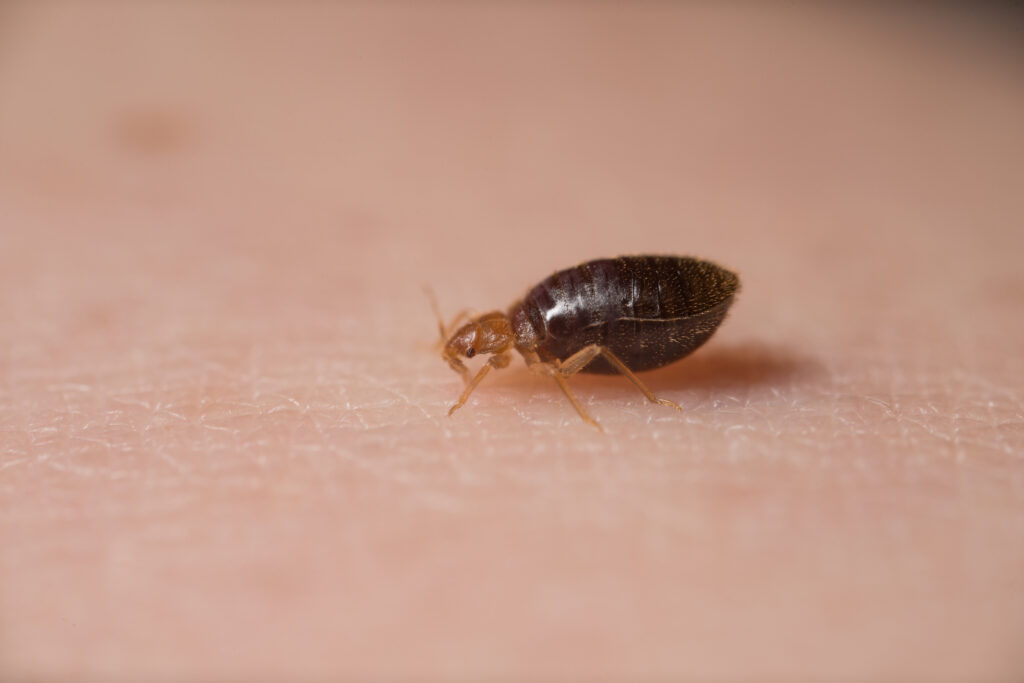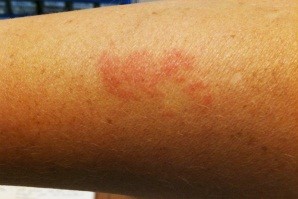
Over the last ten years, bed bug infestations have increased significantly. Bed bugs typically spread passively by traveling in clothing, luggage or furniture. Controlling bed bugs is not easy. Detecting an infestation at an early stage helps to prevent the spread and thus keep the cost of control to a minimum.
Lifestyle of the bed bug
The nocturnal bed bug (Cimex lectularius) feeds on the blood of humans and other warm-blooded animals. During the day, the light-shy animals hide in dry crevices, which they do well thanks to their flat bodies. They are attracted by the increased concentration of carbon dioxide in the air that humans breathe. They also attract each other by secreting signaling substances. After a meal, they multiply their body weight and take on a roundish shape. Bedbugs can survive without food for up to a year.

Life cycle of the bed bug
Freshly hatched bedbugs (nymphs) are white, but their body structure already resembles that of adults. They become darker and darker as they develop. In each of the five juvenile stages, the animals must ingest blood. At the end of a stage, the bedbugs shed their skin and these empty skins serve as reliable evidence of an infestation. With sufficient food and warm temperatures of around 27°C, juveniles can reach sexual maturity within a month. At lower temperatures, development takes longer. After mating, the female lays up to 10 eggs a day in cracks and crevices. Over its lifetime of around 18 months, a bed bug can lay around 300 eggs. The next generation hatches after 12 days.

Bed bug bites
The saliva secreted during the bite causes local anesthesia and subsequently (sometimes only after a few days) triggers severe itching in many people, which can last for several days. A bedbug attack often manifests itself as three to four bites arranged in a line on uncovered parts of the body.

However, reactions vary greatly from person to person and the bites cannot be attributed with certainty to bedbugs.


Secondary infections can be caused by scratching. Although pathogens have already been detected in bedbugs, transmission to humans has not yet been observed (Lai et al 2016).
Detect bed bugs
The professional treatment of a bed bug infestation is time-consuming and cost-intensive. This makes it all the more important to provide unequivocal proof of an infestation. An infestation of bed bugs is confirmed by animals found or clear traces such as excrement stains or moulting remains.


One option is to use sniffer dogs trained to detect bedbugs, although their success rate can vary greatly. Traps with pheromone bait such as Nattaro Scout can be used to efficiently lure bedbugs out of their hiding places and detect them. An aggregate pheromone is used that attracts both females and males at all stages of development and is therefore particularly effective.
